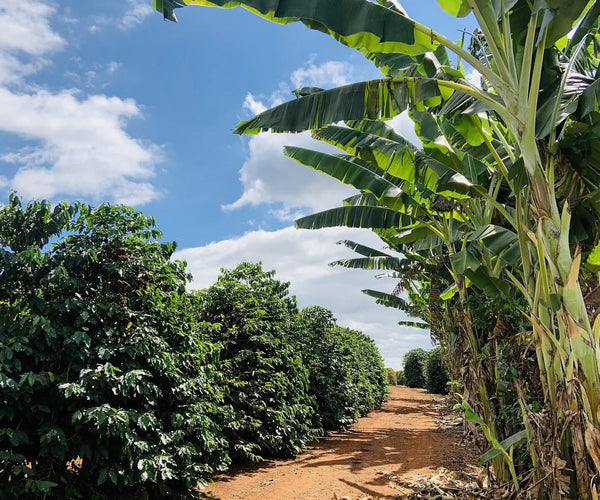☕ Coffee Talk: Understanding Common Coffee Terms
☕ Coffee Talk: Understanding Common Coffee Terms
If you’ve ever looked at a coffee label and thought it read more like a chemistry exam, you’re not alone. Coffee comes with a language of its own — from single origin to cold brew — and knowing what it all means makes the experience much more enjoyable.
Here’s a simple guide to the most common coffee terms, so next time you’re ordering or brewing, you’ll know exactly what’s in your cup.
Single Origin
Coffee sourced from one country, region, or even a single farm. It reflects the unique characteristics of that place — soil, altitude, and climate all make a difference.
Think of it as a taste of a specific landscape.
Blend
A combination of beans from different regions, chosen to create balance, consistency, and flavour harmony.
It’s how roasters build a signature taste that stays the same year-round.
Crema
That golden layer of foam on top of an espresso shot. It’s made up of natural oils and gas from the beans, and it’s a sign of a well-pulled shot.
Body
The texture or weight of the coffee in your mouth — light and delicate, or rich and syrupy.
Arabica vs. Robusta
Arabica beans are prized for sweetness, complexity, and acidity. Robusta beans are stronger, more bitter, and higher in caffeine.
Most specialty roasters (like us) use 100% Arabica for quality and flavour.
Tamping
When preparing espresso, the coffee grounds are pressed evenly into the portafilter to ensure balanced water flow during brewing.
Bloom
When hot water first meets coffee grounds, they expand and release carbon dioxide — this is the bloom. It’s a quick but important step that helps develop flavour and aroma.
Extraction
The process of pulling flavour out of the grounds using water. Too short and it’s sour; too long and it’s bitter. Perfect extraction = balance.
Third Wave Coffee
A movement focused on traceability, sustainability, and craftsmanship. It treats coffee as an artisanal product, not a commodity.
Decaf
Coffee with most of its caffeine removed. A good decaf retains the origin’s flavour, just without the buzz.
Espresso
A small, concentrated shot brewed under high pressure. It’s the base for drinks like lattes, flat whites, and cappuccinos — or perfect on its own.
Filter Coffee
Brewed by slowly passing hot water through coffee grounds using gravity (rather than pressure). Clean, balanced, and ideal for showcasing subtle flavours.
Cold Brew
Coffee brewed with cold water over an extended period (usually 12–24 hours). The result is smooth, naturally sweet, and lower in acidity.
Perfect for warm days — or for anyone who thinks ice coffee should taste like coffee, not sugar syrup.
Flat White
A smaller milk-based espresso drink with a higher coffee-to-milk ratio than a latte. Originated in Australia and New Zealand — smooth, velvety, and strong.
Cupping
The professional method of tasting and evaluating coffee. Roasters and baristas use it to assess aroma, flavour, and balance.
It’s like a wine tasting, but with more caffeine and fewer fancy hats.
Grind Size
How coarse or fine the coffee is ground.
Espresso needs a fine grind; filter or French press use a coarser one. The wrong grind can completely change the flavour, so it’s worth getting right.
Processing Method
How coffee cherries are treated after harvest.
-
Washed: clean, bright flavours
-
Natural: fruity, full-bodied
-
Honey: somewhere in between, often sweet and syrupy
Processing has a huge impact on taste — it’s one of the biggest variables in coffee flavour.
Roast Profile
The degree to which the beans are roasted — light, medium, or dark.
Light roasts highlight acidity and origin character, while darker roasts bring out deeper, chocolatey notes.
Flavour Notes
When you see “notes of caramel” or “hints of citrus,” these are naturally occurring flavours — nothing added. They come from the bean’s variety, origin, and roast.
In Short
The more you understand about coffee, the more you can appreciate its variety and complexity. Whether you’re into cold brew, espresso, or a classic filter, it all comes down to exploring what you enjoy most.
At WBR, we roast in small batches for flavour, not scale — so every term you see on our labels actually means something.



